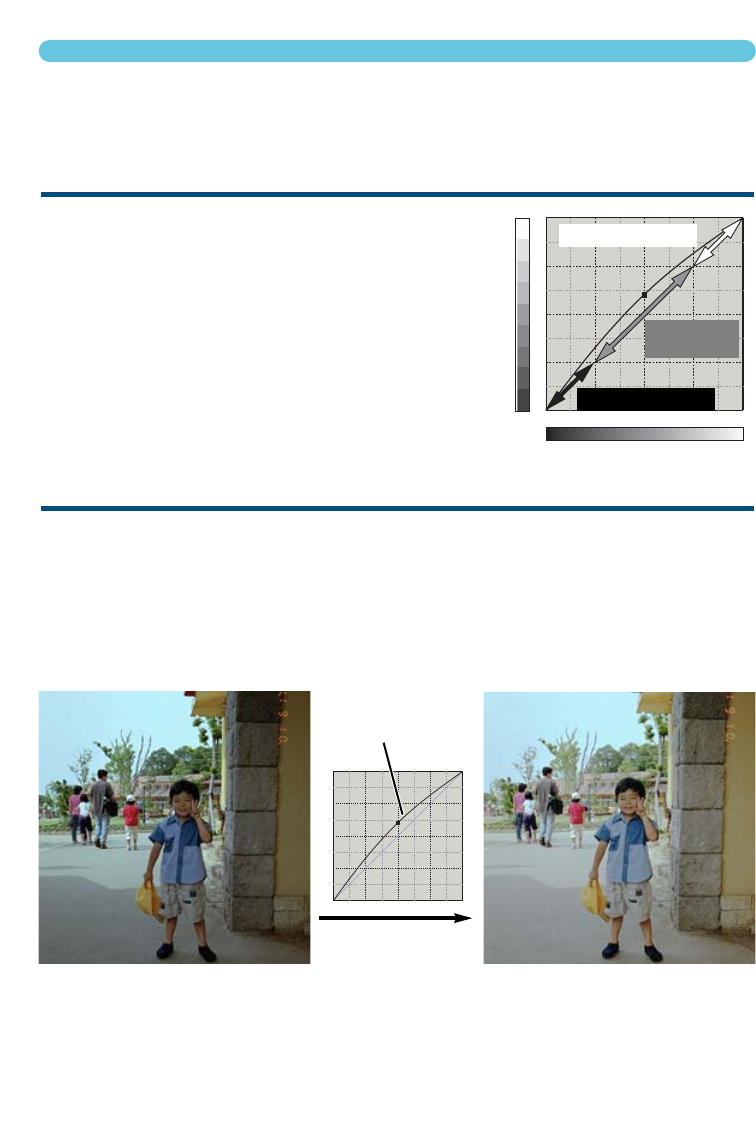
56
A QUICK GUIDE TO TONE CURVE CORRECTIONS
BRINGING OUT DETAIL IN THE SHADOWS
This is a simple technique to make a subject hidden in the shadows brighter. Unlike the brightness
level control (page 52), this method of correction will not lose details in the highlight areas of the
image.
With the RGB channel selected, place the smooth-curve cursor on the centre of the curve. Click and
drag the curve up. Look at the prescan image to judge the result.The adjustment can be very small
and still have a significant impact on the image. Moving the tone curve down will make the subject
darker.
RGB
Image processing is a highly specialised and difficult field that takes years of practice to master.
This basic guide to using tone curves covers a few simple procedures to improve your pictures. For
more about digital-image processing, consult your local book dealer about self-help guides on this
subject.
ABOUT THE TONE CURVE
The tone curve is a graphic representation of the brightness
and colour levels of the image.The bottom axis is the 256 lev-
els of the prescan image (input data) from black to white.The
vertical axis is the corrected prescan image (output data) with
the same scale from top to bottom.
The bottom left portion of the graph represents the dark
colours and shadow areas of the image.The middle section
represents the mid-tones: skin, grass, blue sky.The top right
section is the highlights: clouds, lights. Changing the tone
curve can affect the brightness, contrast, and colour of the final
image.
0 255
255
OUTPUT
INPUT
Shadows
Highlights
Mid-tones


















